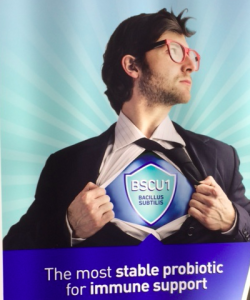Vitafoods revisited
Posted: May 31, 2016 Filed under: Food Comments Off on Vitafoods revisited This year marked the 20th anniversary of VitaFoods Europe. This is a global nutraceutical event, where the whole industry gathers to meet, talk, listen and do business. Axon Lawyers again participated in this event, which took place from 10 – 12 May in Geneva, by giving four presentations. Below, you will find a short wrap up of each of them as well as the slides belonging thereto.
This year marked the 20th anniversary of VitaFoods Europe. This is a global nutraceutical event, where the whole industry gathers to meet, talk, listen and do business. Axon Lawyers again participated in this event, which took place from 10 – 12 May in Geneva, by giving four presentations. Below, you will find a short wrap up of each of them as well as the slides belonging thereto.
B2C Communications in the functional food and nutraceutical sector
Each and any food business operator loves to communicate the benefits of its products, especially in the functional food and nutraceutical sector. However, a strict regulatory framework applies to such communication, which has been largely harmonized at EU level.
For instance, when using nutrition and health claims, one should make sure the authorized wording (or any permitted variation) is used, as well as that the conditions for use are met. Furthermore, one should know that regarding food for special medical purposes, the use of health claims is prohibited. It thereby does not make a difference whether the marketing is targeted at health care professionals or at consumers/patients. Finally, one should avoid making medical claims for food products, including functional foods.
The presentation shows that, based on the presentation of functional foods, it is not always easy to tell whether it is a food product or a medicinal product. Guidance is provided how to prevent a food product to qualify as medicinal products in order to prevent fines for unauthorized marketing of medicinal products.
Marketing functional food to children within the EU
The marketing of functional food to children requires intimate knowledge of the applicable legal framework, both at an EU and at a national level. This presentation starts with a bird’s eye view on the topic, based on the recommendations of the WHO on the responsible marketing of foods and non-alcoholic beverages to children.
Subsequently the EU framework embodied in the Regulations on Health & Nutrition Claims, Food Information to Consumers and Food for Special Groups is discussed, where concrete examples of authorised claims for specific products are discussed.
Finally, it is explained that in various Member States, self-regulatory bodies such as the Advertising Code Committee in the Netherlands and the Advertising Standards Agency in the UK, play an important role in the evaluation of marketing campaigns of functional food products targeted at children. Again, concrete examples are provided by way of guidance.
New EU Clinical Trials Regulation
The aim of the new EU Clinical Trials Regulation (‘CTR’), which is applicable from 28 May 2016, is to ensure that Member States base their assessment of an application for authorisation on identical criteria throughout the EU. Furthermore, it aims to create an environment that is favourable for conducting clinical trials in the EU with the highest standards for patient safety.
The CTR applies to all clinical trials conducted in the European Union. It does not apply to non-interventional studies. The CTR covers investigations in relation to humans intended to:
- discover or verify effects of one or more medicinal products;
- identify any adverse reactions to one or more medicinal product;
- study absorption, distribution, metabolism and excretion of one or more medicinal products to ascertain the safety or efficacy.
So, what is the relevance of the CTR for nutraceuticals, as only medicinal products are covered by the CTR? Although there is no legal definition of ‘nutraceutical’, the word was introduced in 1989 as a portmanteau of the words ‘nutrition’ and ‘pharmaceutical’. Thus, nutraceuticals blur the line between food and drugs and it is often difficult — by legal definition — to distinguish between nutrients, food additives, drugs and nutraceuticals. The presentation discusses relevant case law concerning the food/drug borderline and provides the highlights of the new CTR from that perspective.
Alternative sources of protein
Like last year, alternative proteins were all over Vitafoods. Reasons for the development of alternative sources of protein are easy to point out: health, sustainability and animal welfare. In October 2015, the WHO published a scientific report in which the following was concluded: ‘Consumption of processed meat increases colon cancer risk.’ In the Netherlands, the Dutch Health Council promotes a diet containing more plant based than animal derived proteins.
Eating less meat – and animal derived protein – is also better for the environment as the current production methods require too much natural resources. Last but not least, if meat consumption decreases this is positive for animal welfare. Not only because less animals are slaughtered, but the risk to outbreaks of diseases such as swine fever decreases. Therefore, today there are many alternatives to the consumption of meat.
In the presentation some alternative protein products, such as products containing algae, mushrooms or insects are discussed in the light of the new Novel Foods Regulation as food products may be qualified as “novel” and therefore require authorization under the EU Novel Foods Regulation.
